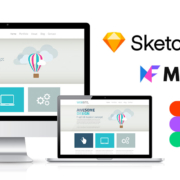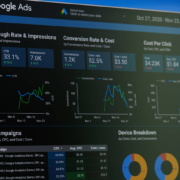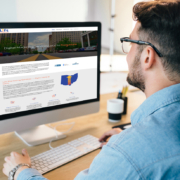Looking at the Most Important Website Design Elements
You can have the most amazing, high-quality content in the world, but if your website design elements are difficult to navigate (or just straight-up suck), then you’re missing out on a huge opportunity. If that wasn’t clear enough: in 2016 alone, people spent more than 7 billion hours on websites – almost twice as much time spent watching videos on YouTube. That’s how important it is to get this right.
Sometimes, people head to your website after finding you on social media. Or a first impression is made after a potential customer types in some keywords on Google (thanks, search engine optimization). They’re on your page; now you want your site to be user-friendly, right?
So let’s look at some key elements of successful websites and how they impact user experience (UX). Don’t just keep scrolling; these are important elements to understand.
Functionality
When a website visitor can easily interact with a site, that means each page loads quickly. You also want a responsive website (or responsive web design). That’s a modern web design practice that allows sites and pages to display correctly on smart TVs, mobile devices, laptops – you name it. Use Google’s mobile-friendly test to see if your site works on different screen sizes.
Hero Images
Your hero image should have as much impact as the Hulk (or insert your favorite superhero). It’s a huge banner or image in the header portion (a.k.a. the top) of your website. These images initially catch your attention at the top of a web page. The better designed a hero image is, the more likely a potential customer remembers your brand. It’s a strong web design element that can leave a lasting impression on visitors.
Typography
Typography is the art of arranging type to make written language legible and appealing when displayed. Focusing on typography will make all the difference to your audience’s experience with your site.
The primary goal of any website should be clarity: you want people to understand what they’re looking at as quickly and easily as possible. That’s why you must choose fonts that are easy to read and consistent throughout your design (for example, no confusing serif with sans serif). Your choice of typeface can also add emotion to a site. Think about how different fonts make you feel. (I mean, who doesn’t feel angry looking at Comic Sans?)
Hamburger Menus
No, this is not food-related. But, a hamburger menu is stacked like food. It’s an example of a navigation menu and usability in user interface (UI) design. You know what we’re talking about – it’s the three little horizontal lines you see on a site. If you look at our website, our hamburger menu is at the top right.
Color Palette
Think of the worst few colors to mash together. How about a neon cyan and 1980s-neon pink, a navy blue then a bold red? Imagine that color scheme when you open a homepage. As uncomfortable as it is to type that, it’s just as difficult to envision it.
Ideally, your brand’s color palette should be represented on your website. The colors should complement each other and not overwhelm the visitor.
Call to Action
Also known as CTAs, these guide your visitor on what they should do next. These are usually clickable buttons that say stuff like “Buy Now!” or “Sign Me Up!” CTAs should be concise and clear. Stay away from jargon or big words.
CTAs are also super important on landing pages, which usually collect some kind of contact information from a visitor in exchange for something else of value. Think of all the times you enter your email for a coupon.
White Space
A modern website design uses white space, a.k.a. the empty space on a webpage. But here’s the thing: it doesn’t have to be white. Depending on how you want the page to look, there are two kinds of white space: active and passive. Active is when you purposely want that minimalist feel by not putting stuff on the page during the design process. Passive is what you’d expect – natural empty space around text or images.
Lift Marketing Is Your Web Design Team
To sum it up, an effective website design is not a task to be taken lightly. Establishing trust and building relationships with customers, finding the right design and structure, and delivering an intuitive user experience while juggling all sorts of website design elements play an important role in creating a successful online presence.
Let Lift Marketing help you build your website the right way: with style and purpose. We create websites that promise results – don’t go another day without giving yourself the success you deserve!












